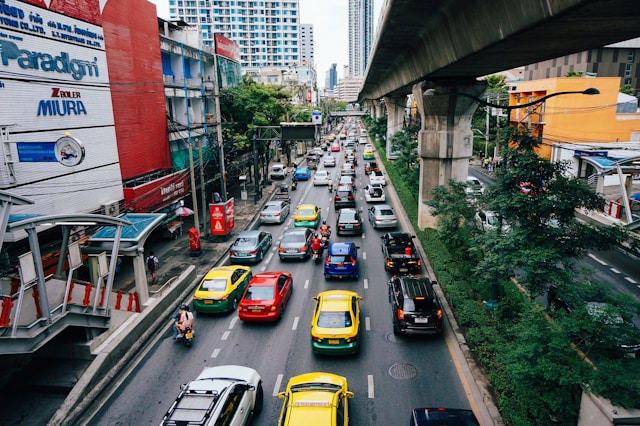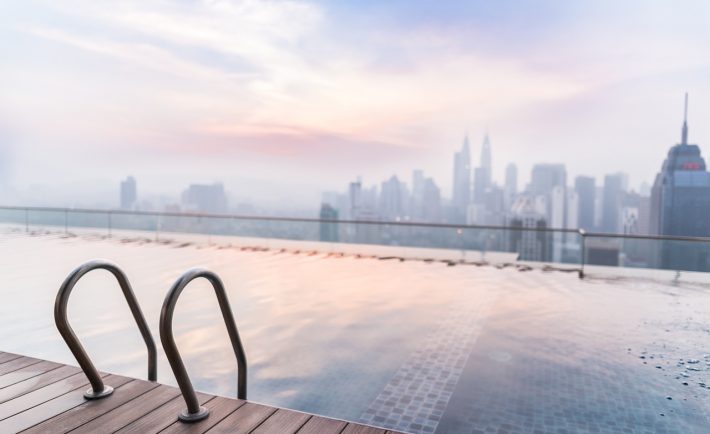Bangkok, a popular shopping destination among Singaporeans, offers a unique blend of culture, cuisine, and retail therapy.
Recently, I visited Bangkok with a few friends, eager for some much-needed R&R and a bit of a shopping spree. During my three-day stay, I met a Singaporean businessman who had once led a prominent entertainment hub in Singapore. He shared his fascination with Thai culture, particularly the practice of visiting various temples to pray for success in business. Another memorable stop was the Chang Siam 100 Baht Shop, which was packed with tourists. I even bumped into another Singaporean who was lamenting how crowded the shop was, and I echoed his sentiment.
Having last visited before the pandemic, I was also struck by the prevalence of cannabis stores. Neon weed signs are now a common sight in Bangkok’s tourist hotspots, with dispensaries on nearly every corner and vendors offering cannabis-infused drinks and food. You see, Thailand became the first country in Asia to decriminalize cannabis in 2022 for medical purposes. However, the market appears to be almost unregulated, raising public concerns about crime and misuse.
Despite these changes, Bangkok remains a worthwhile destination, especially if you’re looking to save money. On that note, here are some travel hacks I discovered during my trip:
#1: DOWNLOAD THE BOLT APP FOR PRIVATE TRANSPORT
Traffic in Bangkok can be chaotic, especially during peak hours. If you prefer the comfort of a private ride over crowded trains and buses, Bolt is a great option.

Image Credits: unsplash.com
I discovered this app thru a friend who shared that it was the cheapest private transportation option she experienced. True enough, the prices on Bolt were significantly cheaper than regular taxis and Grab. For example, a regular taxi quoted 300 Baht for the distance from Platinum Shopping Mall to My Hotel Pratunam, but on Bolt, it was only 66 Baht. Imagine what we can do with the huge difference!
#2: VISIT LOCAL NIGHT MARKETS
Not all markets in Bangkok are created equal. While popular spots like Chatuchak and Ratchada Train Markets are great for the experience, they often come with tourist price markups.
I recommend exploring less touristy markets where you can enjoy cheaper food and shopping. Some local favorites include Ram Inthra Expressway Market and Ramkhamhaeng Night Market.
#3: EAT LIKE A LOCAL
While indulging in high-end dining experiences is tempting, you can enjoy amazing meals anywhere in Thailand without breaking the bank. Try eating at roadside vendors or shopping mall food courts for a more budget-friendly option.
I had a delicious mango sticky rice for 100 Baht and a hearty Pad Thai for about 150 Baht. Just remember to bring antacid medicine if you have a sensitive stomach.

Image Credits: unsplash.com
#4: HIT UP THE HYPERMARKETS
No trip to Thailand is complete without stocking up on local snacks. In Bangkok, Big C and Lotus are must-visit hypermarkets.
They offer a vast selection of snacks, fresh produce, and local treats at reasonable prices compared to smaller convenience stores. It’s a foodie’s dream come true!
#5: WITHDRAW TO THE MAX AT ATMS
In the age of contactless payments, it’s easy to forget how much cash you might need. While many places accept digital payments, you’ll still need cash at local markets and smaller establishments.
To avoid extra bank fees, withdraw the maximum amount or more than you anticipate needing at ATMs. My husband and I compared the conversion rates between paying by card and withdrawing cash, and surprisingly, the ATM rates were cheaper. But, rates may vary depending on the bank, so it’s best to compare first.
#6: NEGOTIATE PRICES WHENEVER POSSIBLE
Singaporeans, like many budget travelers, appreciate getting good value for their money. Bangkok is the perfect place for that, as you can haggle with ticket vendors, taxi drivers, market sellers, and shop owners.
For instance, I saw that the famous Poy Sian inhalers were priced at 99 Baht for six pieces at the Chang Siam Thailand 100 Baht Shop, compared to 120-140 Baht at Pratunam Night Market and Platinum Mall. Shop around and haggle whenever possible.

Image Credits: unsplash.com
These travel hacks can help you make the most of your trip to Bangkok without overspending. May you have a great trip!










